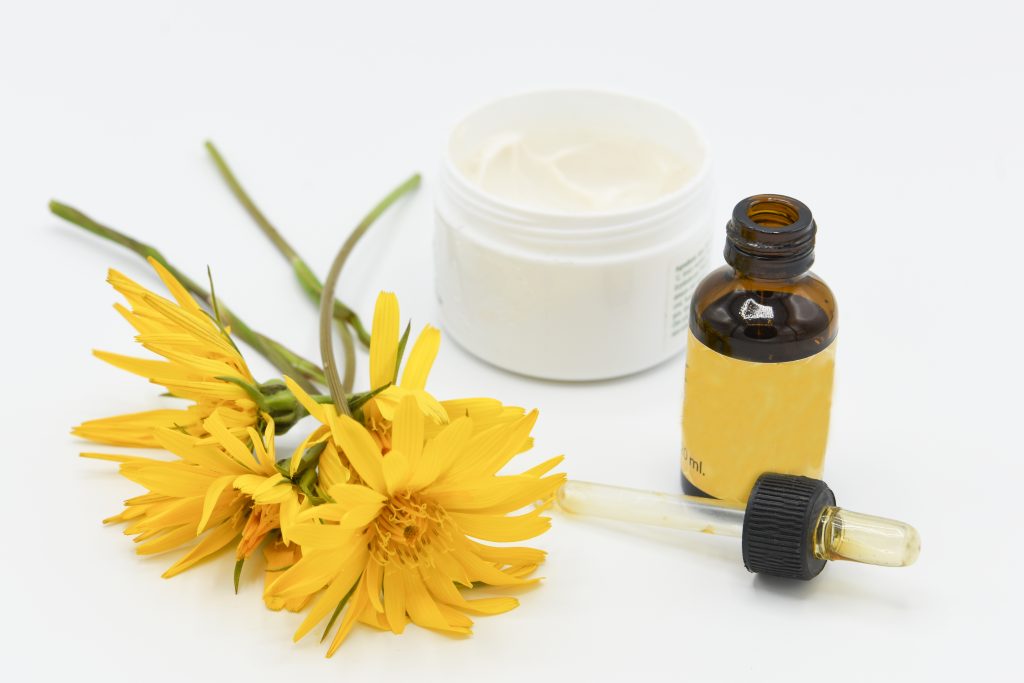Struggling with daily aches and relentless inflammation? You’re not alone.
Many of us reach for painkillers, but at what cost?
Side effects, dependency—the list goes on.
But what if there’s a natural, safer alternative?
Arnica flower is nature’s answer to pain and inflammation.
Forget Big Pharma’s solutions; it’s time to explore how this humble plant is revolutionizing pain relief.
Ready to break free from the cycle of temporary fixes and discover a gentle, effective path to well-being?
Let’s dive into the untold story of arnica flower versus painkillers.

Understanding Inflammation, Aches, and Pains
As we age, our bodies undergo a myriad of changes, many of which contribute to the increased occurrence of inflammation, aches, and pains.
This is not merely an inconvenience but a significant factor that can affect the quality of life for older adults.
Why Older Adults Are More Prone
One of the primary reasons older adults experience more aches and pains is the natural wear and tear on the body over the years.
Joints, muscles, and bones have been in use longer, leading to degenerative changes such as osteoarthritis.
Moreover, the aging process can weaken the immune system, making the body more susceptible to inflammatory conditions.
The Biological Processes
At the heart of inflammation and pain is the body’s natural response to harm or injury.
When your body detects a threat, be it an injury or an invading pathogen, it initiates an inflammatory response.
This involves the release of chemicals and white blood cells to protect the affected area, leading to the familiar signs of inflammation: redness, warmth, swelling, and pain.
While this process is protective, chronic inflammation can become harmful, leading to persistent pain and discomfort.
Pain, on the other hand, serves as a signal from the nervous system that something is wrong.
It can stem from various sources, including inflammation, nerve damage, or the aforementioned wear and tear on the body.
Chronic pain, often seen in older adults, can result from long-standing health issues or conditions such as arthritis, diabetes, or circulatory problems.
In our quest for quick relief from the daily discomforts of aging, painkillers have become a common refuge.
Yet, this seemingly simple solution carries hidden costs that are too significant to ignore.

The Problem with Conventional Painkillers
Painkillers, both over-the-counter and prescription, are staples in the medicine cabinets of many older adults and active individuals.
While they can offer temporary relief, their frequent use raises red flags.
Side effects range from mild—such as nausea and dizziness—to severe, including liver damage, increased risk of heart attack, and kidney problems.
More alarming is the shadow of dependency and addiction that looms over long-term use, turning a remedy into a new source of health concerns.
The Risk of Dependency
Dependency isn’t just about the physical cravings; it’s a complex web that entangles your body and mind.
As you grow accustomed to the painkillers, your body may demand higher doses for the same relief, trapping you in a cycle that’s hard to break.
The mental toll, coupled with physical dependency, creates a scenario where the solution to pain becomes a new problem to solve.
The reliance on conventional painkillers, driven by Big Pharma’s influence, has led us to overlook the potential risks and dependency issues associated with these drugs.
It’s crucial to step back, assess the broader implications of our pain relief choices, and consider alternatives that can provide safe, effective relief without the baggage of side effects and dependency.
Arnica Flower vs. Painkillers: A Closer Look
When it comes to managing aches and pains, the choice between natural remedies like arnica flower extract and conventional painkillers is more than just a matter of preference—it’s about effectiveness, safety, and overall health impact.
Effectiveness
Arnica flower has been used for centuries in traditional medicine for its anti-inflammatory and pain-relieving properties.
Recent studies have begun to back up these traditional uses, showing that arnica can be effective in reducing pain and swelling associated with conditions like osteoarthritis, much like conventional non-steroidal anti-inflammatory drugs (NSAIDs).
However, arnica offers a gentler approach, working with the body’s natural healing processes without the harsh intrusion of synthetic chemicals.
Safety
One of the standout differences between arnica and conventional painkillers lies in their safety profiles.
While over-the-counter and prescription painkillers can cause a range of side effects—from gastrointestinal issues to the risk of addiction—arnica presents a lower risk profile.
Topical applications of arnica, such as creams and gels, are particularly well-tolerated, with minimal side effects, making it a safer alternative for long-term use, especially for older adults concerned about the cumulative impact of medications.
Supporting Research and Testimonials
A growing body of research supports the use of arnica in pain management.
For instance, a study published in the journal “Rheumatology International” found that arnica gel was just as effective as ibuprofen in reducing knee pain and stiffness in patients with mild to moderate osteoarthritis. [1]
Moreover, testimonials from individuals who have turned to arnica for relief often highlight its effectiveness in managing everyday aches and pains, further supporting its role as a viable alternative to traditional painkillers.
In the debate of arnica flower versus painkillers, arnica emerges as a compelling option for those seeking a natural, safer way to manage pain. Its proven efficacy, coupled with a favorable safety profile, makes it an attractive choice for older adults looking to minimize their reliance on synthetic medications and embrace a more holistic approach to health and well-being.

Benefits of Arnica Flower in Natural Pain Management
Arnica flower is celebrated in herbal medicine for its potent anti-inflammatory and pain-relieving properties.
Its benefits span from reducing swelling and bruising to easing muscular aches, making it a favored natural remedy.
Below are some well-documented benefits of arnica flower, each supported by research findings:
1. Reduces Inflammation and Swelling
Arnica flower is widely used to alleviate inflammation and swelling, particularly following injuries or surgery.
A study published in the American Journal of Health-System Pharmacy revealed that patients undergoing arthroscopic knee surgery who used arnica had significantly less postoperative swelling compared to those who didn’t use it. [2]
This finding underscores arnica’s effectiveness in managing inflammation and promoting faster recovery.
2. Alleviates Muscle Pain and Soreness
For those suffering from muscle pain or soreness, arnica flower offers a natural remedy.
Research in the Journal of Sports Science & Medicine found that topical application of arnica gel effectively reduced muscle soreness among marathon runners.
Participants who applied arnica experienced less pain and discomfort post-race, highlighting its benefits for athletes and physically active individuals. [3]
3. Minimizes Bruising and Accelerates Healing
Arnica may reduce bruising and speed up the healing process.
A study featured in the Journal of Dermatological Surgery demonstrated that patients who applied arnica ointment on post-laser treatment bruises saw the same amount of healing as the vehicle group, suggesting that arnica is just as effective at healing bruised skin. [4]
4. Provides Relief from Osteoarthritis Symptoms
Individuals with osteoarthritis can also benefit from arnica’s pain-relieving properties.
A clinical trial reported in Rheumatology International compared the effectiveness of arnica gel to ibuprofen in reducing hand osteoarthritis symptoms.
The results showed that arnica was as effective as ibuprofen in relieving pain and stiffness, offering a viable natural alternative for arthritis sufferers. [1]
What’s the Best Way to Apply Arnica Flower?
One of the most effective ways to treat daily aches, pain, and inflammation is with a topical arnica cream.
But not all arnica creams are created equal.
Some are vastly underdosed, while others rely more on other ingredients like menthol.
To be effective, you need to use pure arnica montana flower extract.
And that’s exactly what you’ll get with Insta Soothe.
This premier muscle and body cream is enriched with pure arnica flower extract, designed for those seeking a natural approach to pain management.
Discover the difference with Insta Soothe and embrace a life free from discomfort.
References
- Widrig R, Suter A, Saller R, Melzer J. Choosing between NSAID and arnica for topical treatment of hand osteoarthritis in a randomised, double-blind study. Rheumatol Int. 2007 Apr;27(6):585-91. doi: 10.1007/s00296-007-0304-y. Epub 2007 Feb 22. PMID: 17318618.
- Samir A. Kouzi, Donald S. Nuzum, Arnica for bruising and swelling, American Journal of Health-System Pharmacy, Volume 64, Issue 23, 1 December 2007, Pages 2434–2443. https://doi.org/10.2146/ajhp07015
- Pumpa KL, Fallon KE, Bensoussan A, Papalia S. The effects of topical Arnica on performance, pain and muscle damage after intense eccentric exercise. Eur J Sport Sci. 2014;14(3):294-300. doi: 10.1080/17461391.2013.829126. Epub 2013 Aug 16. PMID: 23947690.
- Alonso D, Lazarus MC, Baumann L. Effects of topical arnica gel on post-laser treatment bruises. Dermatol Surg. 2002 Aug;28(8):686-8. doi: 10.1046/j.1524-4725.2002.02011.x. PMID: 12174058.

Copyright 2024 and beyond, Critical Nutrition Labs, LLC, All Rights Reserved
